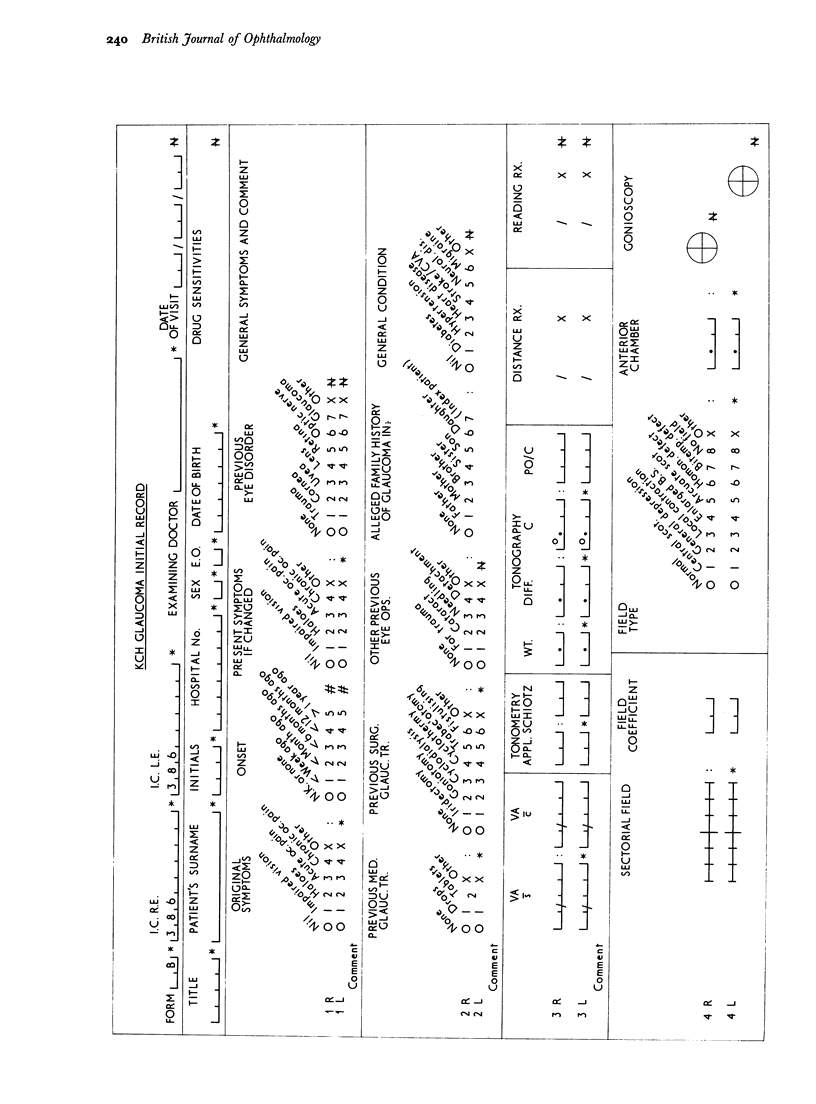Abstract
(1) Chronic glaucoma accounts for a high proportion of blindness which is preventable and calls for energetic action because existing knowledge is not applied as it should be because of the indifference of the Department of Health and Social Security to the glaucoma problem. (2) The condition is frequently insidious and advanced before being identified, and requires life-long supervision. (3) When diagnosed, the management of glaucoma is frequently inadequate and intermittent for a variety of reasons. (4) AtKing's College Hospital, a Glaucoma Centre has been initiated to supervise accurately and regularly a large number of glaucoma patients, assisted by numerical recording and computer analysis. While we are fortunate in having a computer in the hospital, it is important to emphasize that the system can be operated without this facility, either by employing manual methods, or by batch processing. It would be both possible and desirable to organize recording a nd analysis on a regional basis in collaboration with hospitals wishing to participiate. (5) Attempts are being made to improve the early diagnosis ofglaucoma by better communication between the hospital ophthalmologists, and other members of the medical, optical, and ancillary professions by lectures, demonstrations, and publications. (6) Research is always hampered by the absence of factual knowledge. It is planned to use fully the opportunity for research into glaucoma made possible by this basic organization. At present however, we consider it more important to carry out investigations into the problems of organizing the investigation, treatment, and follow-up of glaucoma patients than t o embark on a few individual projects of research. We are serously hampered in our work by shortage of funds for staff and facilities, but we look forward confidently to the time when, with the essential support of the Department of Health, these methods will give us access to the facts of glaucoma, which besides enabling us to give a high standard of treatment to our patients, will give us an unprecedented opportunity of wide ranging research into all aspects of this important disorder.
Full text
PDF












Selected References
These references are in PubMed. This may not be the complete list of references from this article.
- CRICK R. P. A system of visual field testing and recording using a parabolic projection. Trans Opthal Soc U K. 1957;77:593–608. [PubMed] [Google Scholar]
- Friedmann A. I. Serial analysis of changes in visual field defects, employing a new instrument, to determine the activity of diseases involving the visual pathways. Ophthalmologica. 1966;152(1):1–12. doi: 10.1159/000304950. [DOI] [PubMed] [Google Scholar]
- MILLER S. Outflow value in immediate descendants of parents with glaucoma simplex. Trans Ophthalmol Soc U K. 1961;81:577–585. [PubMed] [Google Scholar]
- Rubinstein K., Myska V. Treatment of diabetic maculopathy. Br J Ophthalmol. 1972 Jan;56(1):1–5. doi: 10.1136/bjo.56.1.1. [DOI] [PMC free article] [PubMed] [Google Scholar]


